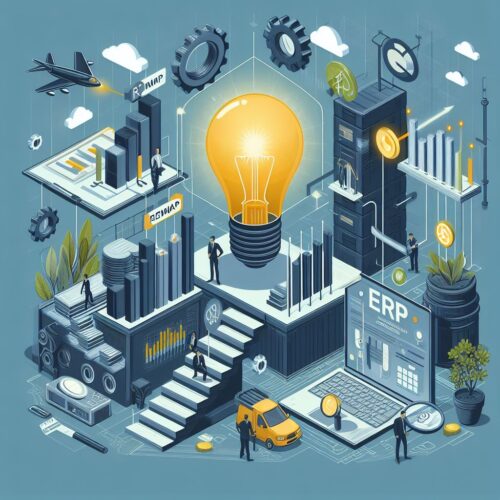
In today’s fast-paced business environment, organizations face a multitude of challenges—from streamlining operations and optimizing resources to enhancing decision-making and staying ahead of the competition. In the quest for efficiency and effectiveness, Enterprise Resource Planning (ERP) systems have emerged as powerful tools for integration, automation, and data-driven insights. However, implementing an ERP solution is not without its complexities. Let’s delve into the world of ERP implementation and explore the keys to success for organizations embarking on this transformative journey.
Understanding ERP Implementation
ERP implementation involves deploying software that integrates various business functions and processes into a unified system. This can include modules for finance, human resources, supply chain management, customer relationship management, and more. The goal is to centralize data, standardize processes, and provide real-time visibility across the organization.
Key Phases of ERP Implementation
- Planning and Preparation: This initial phase involves defining project objectives, establishing a project team, and conducting a comprehensive assessment of business requirements. Clear communication and alignment between stakeholders are crucial at this stage.
- System Selection: Selecting the right ERP solution is critical to success. Organizations must evaluate vendors, analyze features and functionalities, and choose a solution that aligns with their business needs and growth objectives.
- Configuration and Customization: Once the ERP system is selected, it must be configured to meet the specific needs of the organization. This may involve tailoring workflows, defining user roles, and customizing reports and dashboards.
- Data Migration: Migrating data from legacy systems to the new ERP platform requires careful planning and execution. Data cleansing, validation, and testing are essential to ensure accuracy and integrity.
- Training and Change Management: User adoption is key to realizing the full benefits of ERP implementation. Comprehensive training programs and change management initiatives help employees embrace the new system and adapt to new ways of working.
- Testing and Quality Assurance: Rigorous testing is conducted to validate system functionality, identify issues, and ensure a smooth transition. This includes unit testing, integration testing, and user acceptance testing.
- Go-Live and Support: The final phase involves deploying the ERP system into production and providing ongoing support and maintenance. Continuous monitoring, troubleshooting, and optimization are essential to maximize system performance and user satisfaction.
Best Practices for Successful ERP Implementation
- Executive Sponsorship: Strong leadership and support from senior management are critical to driving ERP implementation forward and overcoming resistance to change.
- Cross-Functional Collaboration: ERP implementation requires collaboration across departments and functions. Establishing clear lines of communication and fostering a collaborative culture are essential to success.
- Data Quality and Governance: Investing in data quality initiatives and establishing robust data governance practices are essential to ensure the accuracy, consistency, and reliability of information within the ERP system.
- Iterative Approach: Adopting an iterative implementation approach allows organizations to break the project into manageable phases, minimize risk, and deliver incremental value to stakeholders.
- User Training and Support: Providing comprehensive training and ongoing support to end-users is essential to promote adoption and maximize the benefits of the ERP system.
Conclusion
ERP implementation is a complex undertaking that requires careful planning, collaboration, and execution. By following best practices and leveraging the right technology and expertise, organizations can streamline operations, improve decision-making, and position themselves for long-term success in today’s competitive landscape. Embrace the journey of ERP implementation, and unlock the full potential of your organization.
